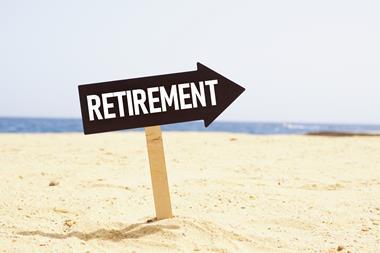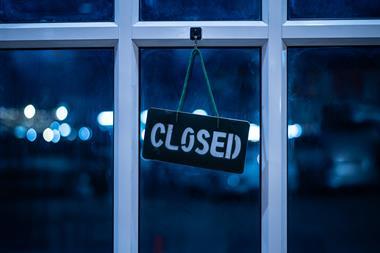Q takes a break from James Bond and assesses a hazards laboratory that can help risk managers to advise on reducing potential dangers
Do pay attention. On the east coast of the great U S of A something of a boys' toys dream exists with a purpose-built James Bond-style research campus.
Grown men spend their days blowing things up, setting fire to warehouses and firing huge ice balls into buildings.
There's never been a dull moment in all my time working with James Bond.
But like my fine work for Her Majesty's Secret Service this is not all for fun.
The purpose of this 1,600 acre research facility run by FM Global looks to help companies worldwide to understand how to prevent a host of accidents and natural threats from destroying their businesses.
You know how clumsy some people can be, just think of Bond himself. A supposedly educated man, he is always leaving a swathe of destruction behind him wherever he goes.
The $78m site has four highly controlled laboratories in which to carry out experiments: a fire room, a natural hazards area, an electrical hazards facility and a hydraulics zone. Splendid stuff.
The fire laboratory is the centrepiece of the whole campus and provides some visual spectaculars. It covers 108,000 sq ft and has the ability to accommodate several huge fires at the same time.
"The dimensions of the building interior can be adjusted to suit a particular type of merchandise, so when it is burnt there is a realistic simulation of the environment. From the data we retrieve we can see which prevention system works best," says Tom Roche, FM Global's group manager, account engineering.
The idea is to not only prevent a fire but to restrict it spreading once it has started. "Once a fire is started, we can recommend ways of localising it and putting it out very quickly, " says Roche.
Some businesses have seen their production wiped out because of what started as an easily preventable small incident.
"The interruption to the business, the impact on loss of sales and even the impact on the company's market share can be all down to a small fire which could have been stopped from spreading," explains Roche.
In the natural hazards area, windstorms and hurricanes are created so researchers can understand why some buildings fail when faced with the worst excesses of Mother Nature.
"We use a gun to fire ice balls of varying sizes to simulate hail storms.
Storms are recreated, including any type of rain, hail or wind. Three large fans simulate wind up to around 160 mph," says Roche.
Tests found that the wood which protects windows during storms needed to be a certain thickness if it was to prevent hail from breaking through the window, causing extra damage.
On top of all this there is a dust explosion bunker. This simulates the effect of igniting fine particles in the air, such as wood, metal, grain and plastics.
"In the dust explosion bunker a handful of dust is thrown into the air and set on fire. The explosion is quite impressive. Flour, for example, is surprisingly explosive, and so is custard powder," comments Roche.
"But metal dust has the potential for the most violent explosion. Many substances that do not ignite when you put a match to them are still capable of causing a large explosion when dispersed in the air."
Many companies already employ risk engineers, with food manufacturers topping the list, because of a greater emphasis on risk management. The message being: insurance is not enough.
Although insurance polices are not dependent on better risk engineering.
"It is not something they are obliged to do and we do not come in with a check-list. We keep the risk engineering separate from the insurance itself," says Roche.
You may think that some of this is all a bit over the top. But you would be wrong.
An example of how this approach can limit damage to a business comes in the form of a major European newspaper firm with a huge paper storeroom.
If there had been a fire there, the whole printing facility would have been destroyed.
"Our advice to change the type of sprinkler head in the room, costing a few thousand pounds, was carried out. A subsequent fire was controlled and the paper was on the news stands the next day, due to changing the head, " says Roche.
On the flip side, there are some occasions when companies have not wanted to listen and have been seriously caught out. One plant manager was advised that his plant was liable to flooding, but he did not agree and refused to do anything about it.
"The plant was subsequently flooded, 1,000 people were made redundant and estimated costs were £40m," says Roche.
And the threat of catastrophic hailstorms is no laughing matter. According to the experts Swiss Re, a bad hailstorm could cause damage in the billions of pounds.
Peter Zimmerli, Swiss Re's chief underwriting officer says: "Our new (theoretical) hail model underlines that hail risk is a major factor in the natural perils exposure of insurance companies whose portfolios have a regional focus and/or which operate in highly hail-exposed areas."
And he adds: "The possibility of a EUR6bn insured loss occurring somewhere in Europe once in a thousand years may sound rather theoretical. But not for the insurance industry: insurers actively address the question what if?"
You have been warned: prudent risk management is essential. I hope you have paid attention.
Hosted by comedian and actor Tom Allen, 34 Gold, 23 Silver and 22 Bronze awards were handed out across an amazing 34 categories recognising brilliance and innovation right across the breadth of UK general insurance.













































